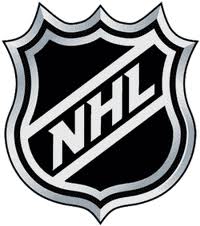 To say that fans of the Columbus Blue Jackets — not to mention the club itself — are salivating over the prospect that meaningful NHL re-alignment is an understatement of epic proportions. The pending plan, which would move both Columbus and Detroit to their rightful spots in the Eastern Conference, would also reverse a string of misfortune that has many in Central Ohio searching for the nearest exorcist.
To say that fans of the Columbus Blue Jackets — not to mention the club itself — are salivating over the prospect that meaningful NHL re-alignment is an understatement of epic proportions. The pending plan, which would move both Columbus and Detroit to their rightful spots in the Eastern Conference, would also reverse a string of misfortune that has many in Central Ohio searching for the nearest exorcist.
Consider that the community received its first perceived reprieve in 2011, when the NHL announced its approval of a realignment plan that would have provided much-needed travel relief. Unfortunately, the NHLPA chose that issue to fire its first proverbial warning shot across the league’s bow, sinking realignment — together with the first half of the 2012-13 season. The part that was wiped out? That included the All Star Game as a victim — which was slated to take place in Columbus. In the interim, the Blue Jackets helped disprove the notion that winning the lottery depends upon how many tickets you buy. Edmonton snuck in — again — to claim the #1 overall pick. True, the Blue Jackets still garnered a top prospect in Ryan Murray — who then promptly went down with a season-ending shoulder injury.
So, when word began to leak about the latest NHL plan for realignment, the Columbus constituency reacted with guarded enthusiasm, with anticipation balanced by the slightly paranoid fear that a vast conspiracy would find a way to snatch this apparent victory from their grasp at the last moment. Given all that’s happened, it’s understandable. Keep in mind that this franchise has lost most of two of its first twelve seasons to work stoppages. However, on the positive side, the Blue Jackets made some nice off-season acquisitions in Artem Anisimov, Sergei Bobrovsky, Brandon Dubinsky, Tim Erixon and Nick Foligno, have three first round picks for the upcoming draft, and earned league-wide plaudits for nabbing John Davidson and Jarmo Kekaleinen for front office roles.
Realignment Nuts & Bolts
To briefly review the merits, the NHL plan calls for four divisions, with eight teams in each of the two Eastern Conference divisions, and seven in the two Western Conference subdivisions. Here’s how they line up:
Eastern – Central: Montreal, Ottawa, Toronto, Buffalo, Detroit, Boston, Florida, Tampa Bay
Eastern-Atlantic: Columbus, New York Rangers, New York Islanders, New Jersey, Philadelphia, Pittsburgh, Carolina, Washington
Western- Midwest: Minnesota, Chicago, St. Louis, Nashville, Winnipeg, Dallas, Colorado
Western-Pacific: Phoenix, Anaheim, Los Angeles, San Jose, Vancouver, Edmonton, Calgary
Under the plan, the top three teams in each division would automatically qualify for the playoffs, while the remaining two slots in each conference would go to the next two highest point totals, regardless of division. Playoffs would commence at the divisional level, then move to the conference stage. Each team would have a home-and-home series with the teams in the other conference, and varying intra-conference games, depending upon conference. The major moves, of course, involve Winnipeg moving from East to West, with both Columbus and Detroit moving from West to East, being the only Eastern Time Zone teams presently in the West. (For geography nerds, Columbus actually lies east of both Detroit and Atlanta, which was also an Eastern Conference club before relocation to Winnipeg.) The alignment would apparently be revisited in the 2015-16 time frame. While the NHLPA and the NHL Board of Governors must each approve the plan, multiple reports indicate that the NHLPA was involved at some level during the planning phases.
Objections & Obstacles: Let History Be Your Guide
Consistent with the regional paranoia over negative results, let’s look at the reactions of the naysayers first. The most frequently voiced concern involves the disparity in numbers between the  conferences, and the notion that it is “easier” to make the playoffs in the Western Conference than in the East. While many point to the NHLPA voicing objections along these lines in 2011, keep in mind that both the substance and the timing of that objection had more to do with the NHLPA asserting its position before the CBA talks, rather than any true abiding concern over realignment.
conferences, and the notion that it is “easier” to make the playoffs in the Western Conference than in the East. While many point to the NHLPA voicing objections along these lines in 2011, keep in mind that both the substance and the timing of that objection had more to do with the NHLPA asserting its position before the CBA talks, rather than any true abiding concern over realignment.
More fundamentally, a brief review of NHL history shows that disparate conference size is hardly a novelty. Sure, for those relatively new to the game, the last eleven years on the ice with 30 teams divided into 15 team conferences seems like an eternal truth. However, the fact is that between the initial NHL expansion in 1967 and the completion of the most recent expansion in 2000, the conferences were unbalanced for 18 years, and equally distributed in 16 years. The sun rose every morning, and no cataclysmic event resulted from this disparity.
Others have raised concerns over the geographical pairings, noting the somewhat bizarre pairings in the “Central Division” matching the Florida teams with the eastern Canadian teams, Detroit, Boston and Buffalo. First, no alignment plan can be geographically perfect in a league that is geographically over-distributed to the Northeast. However, such geographical anomalies are hardly rare. When Buffalo and Vancouver were added to the NHL for the 1970-71 season, they were both placed in the Eastern Conference, with Chicago moved to the West. Huh? When the beloved Campbell and Prince of Wales conferences were discarded before the 1993-94 season, the Western Conference included Toronto. (Oh, and the West had 12 teams, while the East had 14) The Maple Leafs did not move back East until the 1998-1999 season, when Nashville entered the League. Such idiosyncratic pairings have been relatively common since the league doubled in 1967, and again — no catastrophic results.
One objection that I expected to hear more — but haven’t — is objections from the Western Conference clubs — particularly Nashville, St. Louis and Chicago — over losing Detroit as a draw. For the Pacific and Northwest teams it is not a huge issue, as Detroit comes to town only twice per year today, and will be there once in the new system. The reduced travel more than makes up for that. While Chicago fans will likely have an emotional reaction to being the lone Original Six team in the West, their club packs the house every night anyway, so the immediate impact is nil. Of course, it was not that long ago that the seats were empty in the Windy City, so it may not always be the case. Nashville & St. Louis will miss the Detroit draw far more.
Finally, some object to the notion of the “wild card” concept, the seeding of playoff participants, and other aspects of the post-season arrangement. However, no matter what system is implemented, these objections will surface. The objections, however, are not truly related to the specific alignment methodology, but rather simple expressions of differing views of how playoffs should be conducted. Some want an NCAA Tournament method, others want different seeding strategies and still others insist on the equal conference configuration, claiming tradition (in spite of the historical facts referenced above.) Things change, and games adapt to them. Baseball manages to profess the sanctity of the home record, despite the fact that ball parks are vastly different dimensions, and individual teams can alter the fences, moving them in or back, up or down. Get used to it.
The Great Expansion Question
Any time you have mismatched conferences, speculation immediately turns to expansion, even as the NHL denies having any plans on the drawing board. (If you believe that one, come see me. I have some property you might be interested in . . .) Some suggest that the fact that the gaps fall in the Western Conference is inconsistent with what everyone assumes to be expansion targeted in southern Ontario. They reason that such an expansion would immediately send the Blue Jackets back to the West. Not so fast . . .
First, the Ontario expansion is merely one of the target areas, which also include Seattle, Kansas City or even Oklahoma City. One of the wild cards, of course, is the Phoenix situation. However, whether Phoenix folds or relocates (to Seattle, Kansas City or Toronto), the result is pretty much the same. Obviously, Kansas City or Seattle entries fall in the West, but what about a second Toronto-area club? Many assume that the club would have to be in the East, but is that really true? Again, the Maple Leafs were in the West for a considerable length of time. Also, with two clubs in the same geography, wouldn’t you want the two in separate conferences, setting up the potential for an “All-Toronto” Stanley Cup final? Sure you would.
Again, the assumptions that the NHL would have to go immediately to 32 teams is misplaced. The league was at 21 clubs for a decade, so 30 or 31 is not an issue. So while expansion is certainly a lieklihood, despite the NHL protestations to the contrary, there is nothing about the realignment plan that mandates it over the short term.
Positives Abound
 Ultimately, the success of realignment rises and falls with the economics of the situation — for the individual clubs and the NHL as a whole. At the most obvious level, moving Detroit and Columbus east creates far more television opportunities for both the league and the involved clubs. West coast games that start at 10 or 10:30 PM just don’t draw ratings, even among the most ardent fans. Detroit is a big draw, anywhere and anytime, and the league will undoubtedly leverage that fact. The Red Wings in prime time for the East is something the NHL will love, and it will provide some leverage for bigger and better TV deals.
Ultimately, the success of realignment rises and falls with the economics of the situation — for the individual clubs and the NHL as a whole. At the most obvious level, moving Detroit and Columbus east creates far more television opportunities for both the league and the involved clubs. West coast games that start at 10 or 10:30 PM just don’t draw ratings, even among the most ardent fans. Detroit is a big draw, anywhere and anytime, and the league will undoubtedly leverage that fact. The Red Wings in prime time for the East is something the NHL will love, and it will provide some leverage for bigger and better TV deals.
While Detroit’s drawing power is ubiquitous, Columbus will see tremendous benefits from an Eastern Conference affiliation. While the uninitiated do not acknowledge Columbus as a hockey market, nothing could be further from the truth. However, until the Blue Jackets arrived, local hockey fans rooted for Detroit, Pittsburgh and – to a lesser extent — Chicago. There are no historical to most of the Western Conference cities. Historically, the Eastern Conference teams have outdrawn the Western clubs (except Detroit and Chicago) by a considerable margin at Nationwide Arena. Last season, the gap was over 2,000 per game. The lowest attendance for a Pittsburgh game at Nationwide is 18,136 – a sellout. Having more traditional opponents — including Detroit — will enhance attendance, facilitate TV ratings and even encourage more travel to away games.
Finally, there is the matter of success. Since entering the NHL in 2000, the Blue Jackets have posted a record of 83-76-28 vs. Eastern Conference clubs. It goes without saying that this is much better than the Columbus record within its own conference. Of course, there are no guarantees of success, but again that history thing provides encouragement.
Will It Happen?
This, of course, is the big question, and skeptics hearken back to the 2011 plan in projecting that the NHLPA will scuttle this deal as well. This argument fails to hold water. First, as suggested above, the time and circumstances are different. The NHLPA has nothing to prove, no point to make this time around. They have apparently played some role in the process to date, which I suspect was part of their prior objection. There is no public relations advantage to blocking this deal, and indeed could be some PR dangers if they are seen as being overtly obstructionist.
More fundamentally, there are manifest reasons to do this, and few — if any — compelling reasons not to. At the most basic level, there is every reason in the world to move Winnipeg to the west, particularly when you have at least one team — and in this case two teams — who should properly move east. Even if you didn’t do anything else, a swap of Winnipeg for either Columbus or Detroit would need to occur, and Columbus would be the most likely candidate in that scenario, simply on geography. There are major economic benefits to Columbus that come from a move east, while Detroit will save some travel time and expense, but otherwise will not likely see big financial gains. The Joe sells out every night, regardless of opponent, and Original Six fans across the country buy the Winged Wheel sweaters and gear, no matter what conference they are in.
None of the objections raised thus far resonate as being deal killers. There will never be that idyllic realignment plan that has everyone holding hands, skipping merrily off into the sunset. So, given that something needs to happen, and there really is not a big reason not to implement this plan, my bet is that it gets approved, relatively intact. Stay tuned Columbus — you may have just earned some added sleep.
Author information
This article was originally published at: The Hockey Writers.
0 komentar:
Posting Komentar